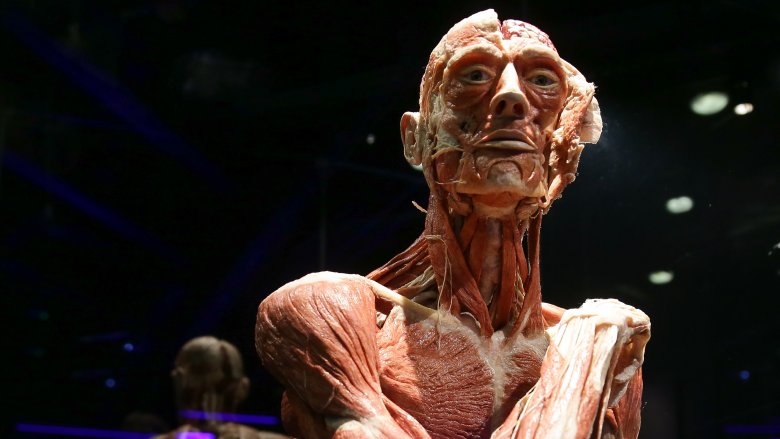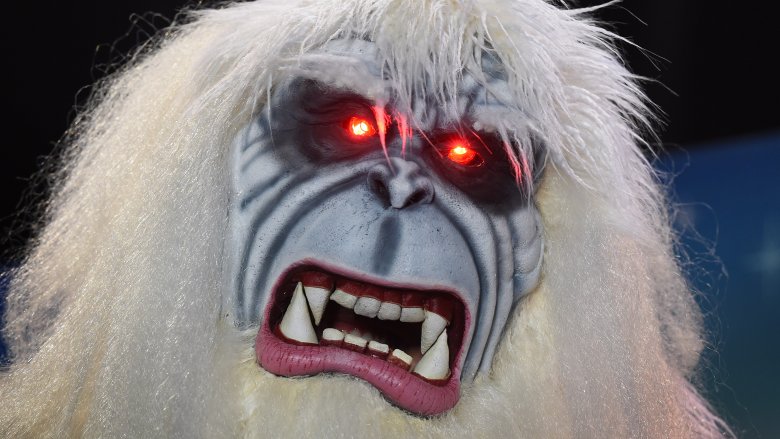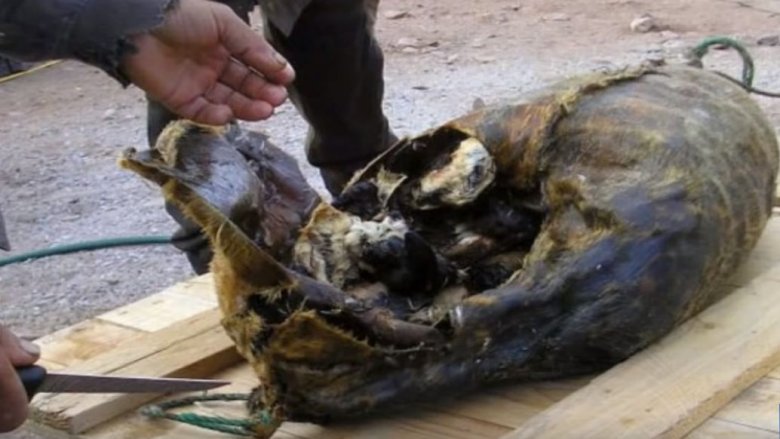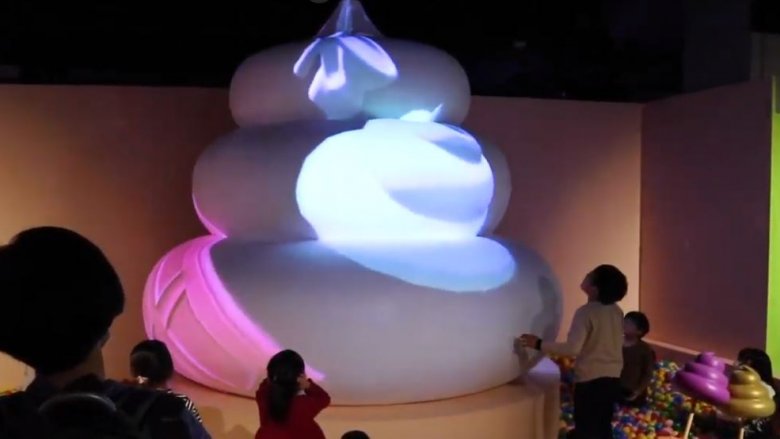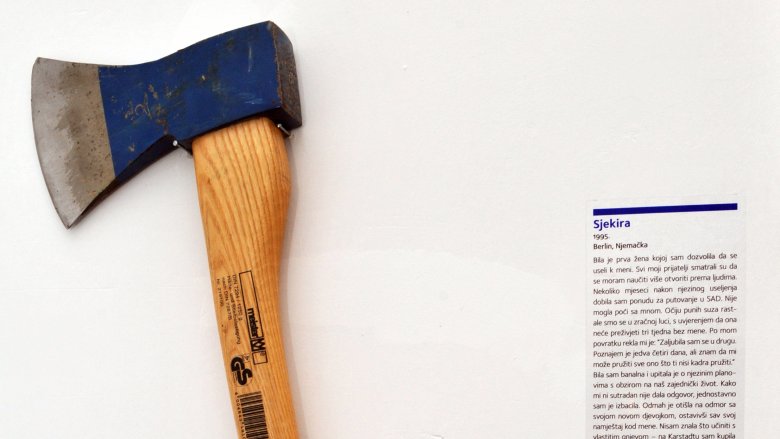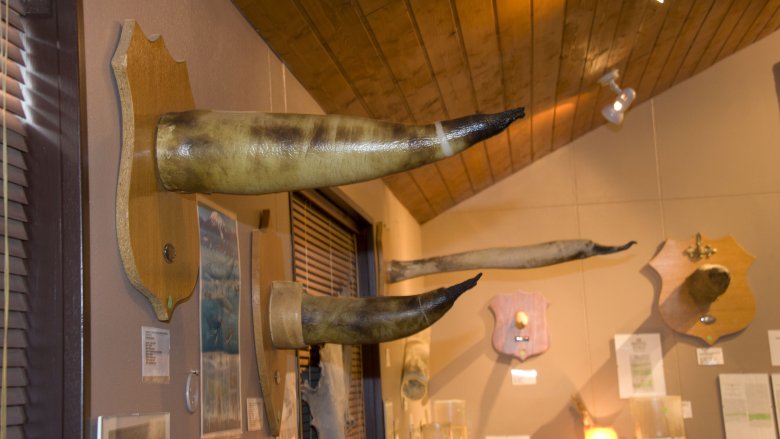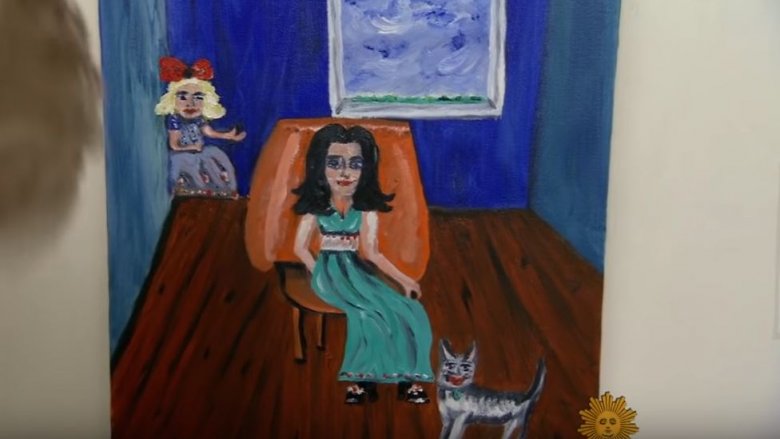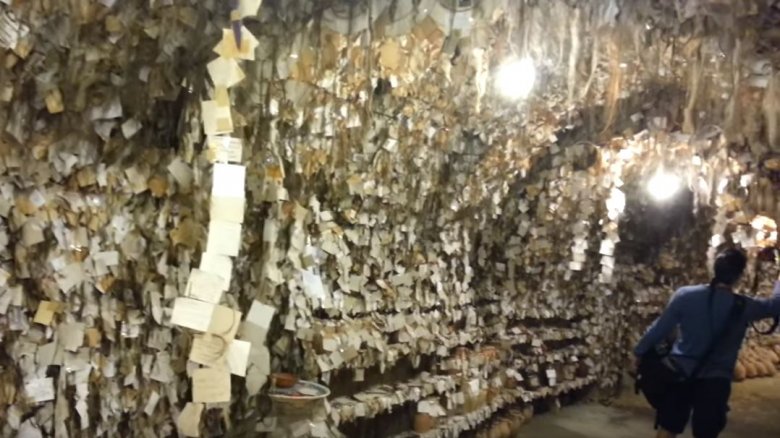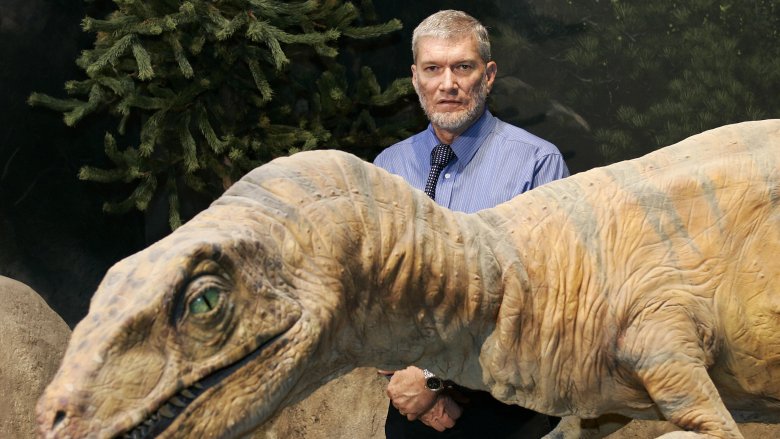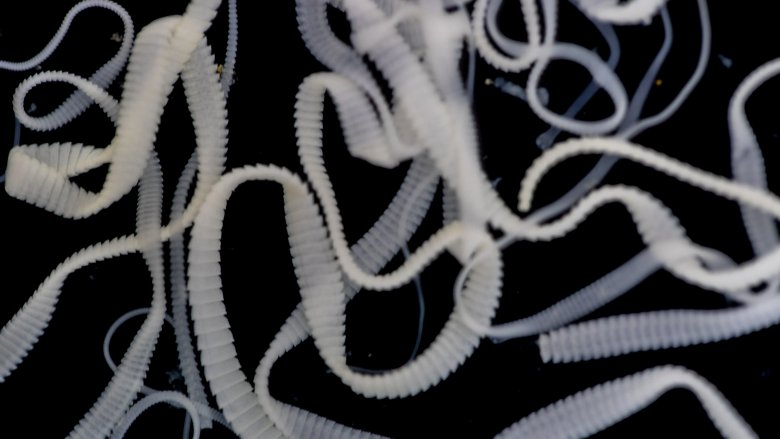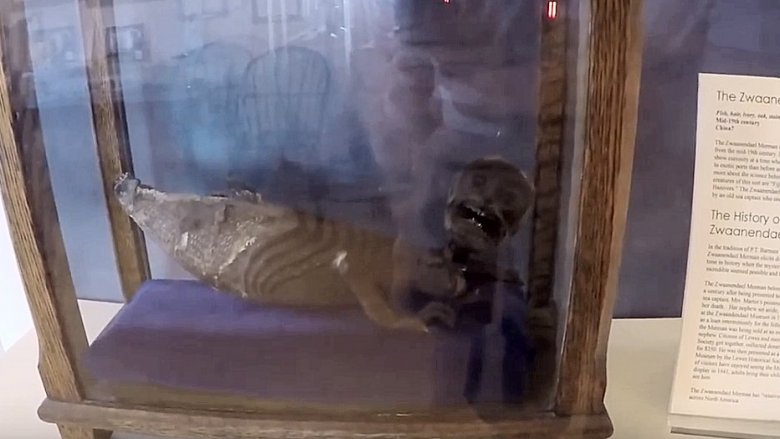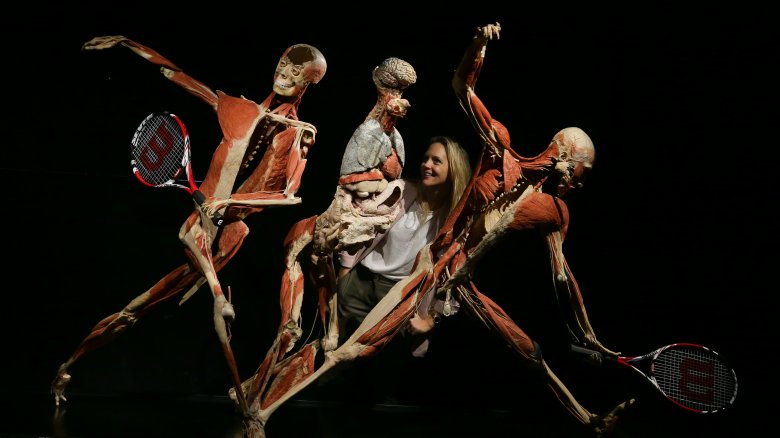The Most Bizarre Things Found In Museums
Not a fan of Greek statues? Does an entire wall of classical artwork make you yawn? Is that display of 11th-century forks and spoons not exciting enough for your Instagram followers? Are you the sort of person who gets annoyed on vacations when your friends want to spend hours hunting through shelves of historical artifacts?
Even if the above statements describe you, don't write off museums: Maybe you just need to up your tourism game. Even the most normal-seeming museums sometimes contain hidden (and utterly bizarre) gems, and the freakier museums are even better. From Philadelphia to Tokyo, museums have been popping up with collections that range from hilarious to awesome to incomprehensibly terrifying, depending on your point of view. So stop yawning, forget everything you think you know about museums, and start writing up your next travel itinerary. It's a weird world out there, and as you'll see, it's only getting weirder.
Hair of the abominable snowman
You've probably heard of the Yeti, Bigfoot's colder cousin, the mythological ape-man said to be prowling through the Himalayas ... you know, when he's not menacing Rudolph the Red-Nosed Reindeer. Most likely, you've also heard that Yetis aren't real. What you might not realize, though, is that the International Cryptozoology Museum of Portland, Maine, has a sample of Yeti hair, according to Boston.com.
Now, before you freak out, this doesn't mean Yetis truly exist — according to Live Science, DNA tests performed on purported Abominable Snowman hair samples tend to prove they actually belong to bears and dogs — but these little tufts of fur in Portland were apparently discovered in the frigid mountains back in 1959 and 1960, according to the museum's website. This display is accompanied by a letter from Jimmy Stewart, the famous actor who was connected to the whole "Pangboche Hand" mystery (it's a long story), and even some Yeti poop. These samples have all gained some notoriety in the monster-hunting world, and featured on the kind of TV programs your conspiratorial uncle watches between episodes of Ancient Aliens. If Yetis aren't your thing, though, don't worry: The museum also features strange and wondrous exhibits on such unproven creatures as the Jersey Devil, the Montauk Monster, the Tatzelwurm, and a hairy 8-foot Bigfoot model. For cryptozoology fans, it's a must-see.
Dinner tonight? Birds pickled in a seal carcass
If you're a picky eater, then the Disgusting Food Museum in Malmo, Sweden, might be your worst nightmare come to life. Housing 80 of the world's most revolting dishes, the museum's purpose isn't to mock but rather to educate: Why does one culture find certain foods disgusting, while another loves it? The museum serves as an examination of how subjective disgust really is, and demonstrates how your idea of what constitutes "disgusting" food is largely learned behavior rather than being hardwired.
The potential stomach-churners on display include balut (a hardboiled, fertilized duck egg that's popular in some parts of Southeast Asia), casu marzu (maggot-infested cheese from Sardinia), durian (a foul-smelling fruit from Thailand), and root beer, a drink that's widely considered repulsive outside the United States. There's at least one food on display that even the museum's organizer can't stomach, according to Vox, and that's kiviak. Described by CBS as a festive dish from Greenland, kiviak is made by killing a seal, gutting it, then stuffing the body full of hundreds of little auk birds — feathers, beaks, bones, and all. At this point, the seal is sealed and left rotting for months. Once the fermentation process is done, the seal is reopened, and the now-mushy auks are eaten whole. Yum?
If you want to see kiviak without being challenged to put it in your mouth, this Swedish museum is the place to go.
Jump in the (artificial) poop
Every animal poops. That's just the way it is. No matter your status, gender, region, or even species, one could say that bowel movements are the great unifier between all fleshy, feathered, furry, or scaly creatures alike ... or, at least, that's the idea powering Japan's Unko Museum. "Unko," as you've probably guessed, is Japanese for "poop," and according to CNN, this Yokohama tourist attraction celebrates everything bowel-related, with colorful poop art displays, poop-themed music videos, toilet seat art boards, poop toys, and microphones you can yell "Unko!" into. If you've ever wanted to take selfies with candy-colored poop decorations, this is your chance.
Perhaps the most unforgettable display of poopery, according to one blogger's review, is a ball pit centered around a giant, glowing, ornamental poo pile. Yes, this is the real world. Kids and adults alike are invited to jump into the pit, where they can play, frolic, and have fun. Every few minutes, the big poop erupts like a volcano, spewing little foam poops all around the room, which visitors are encouraged to catch and return to the staff. Luckily, it doesn't sound like this cheerful museum has an irritable bowel to be found.
Chop your heart open
A lot of heartbreak courses through Hollywood's veins, but you probably didn't realize that there's a whole museum to, uh ... celebrate it? The Los Angeles Times describes the Museum of Broken Relationships as a heartfelt, largely crowd-sourced examination of real items, sent by real people, symbolizing the many imprints that breakups, missed connections, and lost loves leave not only on your soul, but on the day-to-day items in your life. First created in Croatia by a real broken-up couple named Olinka Vištica and sculptor Drazen Grubisic — impressive cooperation between exes there — the museum is now permanently housed in L.A., with over a thousand everyday items on display ranging from sad to humorous. Notable pieces include an ex-boyfriend's belly button lint, a toaster that a lover stole from their dumper, and a drawing made by a stranger on a train.
The most striking exhibit in the museum is probably Exe Axe. It's a real axe sent from Berlin that a spurned lover once used to chop up all of their ex-partner's furniture, when that person ditched them for a new face. Catharsis can get messy.
A rather pointed display
If there's one place in Iceland that every crew of college-aged tourists considers a must-see, it's the Icelandic Phallological Museum, which is exactly what it sounds like. This diverse celebration of the male organ is the work of historian Sigurður Hjartarson, who started with a pizzle (bull penis) in 1974, added some whale members to the mix, and eventually opened the museum doors in 1997. The museum now features over 200 samples from every animal you can think of, including a sperm whale dong the size of an adult human, an elephant's between-the-legs-trunk, the little friend of polar bear, and a hamster's equipment that is so small it requires a microscope to view, according to Reuters. For those who prefer their junk with a side of epic fantasy, there's also a folklore section that includes items that allegedly belonged to elves, a merman, a ghost, and a one-legged, one-armed, one-eyed human monster called a Beach Murmurer. Hey, maybe these things have magical fertility powers?
In 2011, the Independent reported that the museum had finally achieved its longtime goal of putting a human example on display. The donor was 95-year-old Pall Arason, a friend of the museum's founder. Unfortunately, the formaldehyde preservation was rushed, resulting in a discolored, shriveled display not worthy of its former owner, but Hjartarson is still keen to get a "younger and a bigger and better one" someday in the future. We all have dreams.
Brains of a genius, on display
On the night of April 5, 1955, a pathologist named Thomas Harvey performed the autopsy on the body of a man who had died of an abdominal aortic aneurysm, according to the Smithsonian. That cause of death is common enough, but the man himself was anything but: He was Albert Einstein, the Nobel Prize-winning theoretical physicist who has become the paragon of the word "genius" in popular culture. Dr. Harvey was fully aware of how brilliant Einstein was, so he decided to ... uh, steal the man's brain. Yeah.
That might sound like a B-movie plot, but it really happened. Unethical, much? To make matters worse, Harvey apparently kept the brain in a glass jar, or sometimes in a cider box under a beer cooler, for decades, while he dissected it into tiny pieces and sent them around the world. (Einstein's family was unaware of the initial theft, but they eventually allowed the doctor to hang onto it if the brain samples were used for scientific research.) Moral messiness aside, pieces of Einstein's brain have now found a strange home at Philadelphia's Mütter Museum, whose collection includes everything from bones to organs to medical instruments. While it has become a top tourist attraction, Einstein himself would not have approved: According to Bess Lovejoy, the famed scientist actually told one biographer that he wanted to be cremated so people wouldn't be able to worship his remains.
Creativity at its worst
You may have heard of the Museum of Modern Art (MoMA) in New York City. But did you know that a few hours north, right near Boston, is the MoBA? That's the Museum of Bad Art, and oh boy, does it contain some crappy pieces. These lamentable works of passion include "Safe at Home," an oil painting of a Red Sox player being devoured by ... a headless fawn? Why? Who knows. The collection ranges from surreal nude portraits, sometimes donated by the artist themselves, to creepy thrift store finds, all united by their poor craftsmanship, bad proportions, and a general lack of professionalism. The key factor is that these aren't just slapdash paintings. These are meticulously orchestrated disasters, the canvas equivalent of Tommy Wiseau's The Room, almost as tragic as they are amusing.
MoBA's main gallery is located in the basement of the Somerville Theater. They only display around 50 exceptionally horrible pieces at any given time, but their full collection numbers around 800. You might consider donating an exhibit if you've been hanging onto that horrendous self-portrait you painted in high school, and you have a thick skin.
Ramen for everyone!
To you, ramen might be just a cheap food that brings back memories of your first apartment, but the culture and history of this noodly Japanese dish goes deeper than you know. The first instant noodles, called "Chicken Ramen," were invented by a guy named Momofuku Ando in 1958. Little did he know that he would one day be feeding generations of young adults, or that almost half a century later, an institution in Ikeda, Japan, would be opened in his honor: Cupnoodles Museum.
Yes, this really is a museum all about ramen, and yes, it's as wonderfully wacky as it sounds. The Cupnoodles Museum is a loving showcase of the not-so-instant history of this world favorite food, which contains everything from a factory where you can make your own ramen to a recreation of the little shed where Momofuku Ando first brought the dish to life. There are quizzes, a theater, and a tasting room (of course), but perhaps the centerpiece of it all is the Instant Noodles Tunnel, where you can walk down a hallway decorated with hundreds of ramen packages, showing the entire history of this fast food. Whether you love ramen or not, you'll never look at that hot noodle soup the same way again.
Walls so hairy you could shave them
If you think your shower drain has too much hair in it, try taking a trip to the Avanos Hair Museum in Avanos, Turkey. Don't expect to see shelves upon shelves of carefully preserved hair follicles from throughout history, though, because Atlas Obscura says it's a bit more DIY than that: Instead, picture a cave-like room with countless snippets of hair attached to every surface, which you're free to peruse. It's like David Lynch's idea of a barber shop. As you might have guessed, these over 16,000 hair samples have earned a Guinness World Record.
How did such a bizarre museum come about? The common folklore is that a local potter once asked a dear departing friend to leave him a snippet of hair to remember her by. She did, and he put it up in his shop for visitors to see. Apparently this inspired future guests to gift their own pieces of hair, and one by one, the shop was taken over. A bit hokey, for sure, but weirder stories can be found in the average Hoarders episode. Anyhow, the place became a museum in 1979, and they now offer scissors to any visitors wanting to leave their own scalp tokens.
Bad science
Scholars have analyzed the Book of Genesis for centuries, and there's certainly a wealth of fascinating material there. But the so-called Creation Museum — a Kentucky operation run by Ken Ham (above) — is the $35 million equivalent of that rambling guy outside the DMV who always sentences you to hell. By combining numerous Disneyland-style animatronics, sculptures, and fossils with blatantly inaccurate "facts," the Creation Museum sells a false narrative most exemplified in its Noah's ark and flood exhibits, which make the following dubious propositions: that the world is only 6,000 years old, that dinosaurs walked side-by-side with humans for generations (what, is this a Land of the Lost convention?), and that these dinosaurs survived the flood by cramming tightly into Noah's ark. Yeah, good luck keeping a T. rex from eating that lamb. As if all this weren't nonsensical enough, the museum also suggests that dragons were real as well.
Whatever one's views on Genesis, most believers don't take such a fundamentalist line on the events described. And while it might seem funny to laugh at all this dinosaur silliness, some, like Bill Nye, worry that rejecting the conclusions of modern scientific thought will result in a "scientifically illiterate" generation.
The megalithic tapeworm you've always feared
It could be argued that your body is already something of a parasite museum, considering the millions of weird organisms living on it right now. But if you're looking for a more brick-and-mortar style collection of the heebie-jeebiest critters out there, consider visiting the Meguro Parasitological Museum in Tokyo. Founded in 1953 by a medical doctor named Satoru Kamegai, this place lets you gaze in horror at the countless parasitic organisms that could someday find a home inside you. Altogether, the museum keeps about 60,000 parasite specimens.
The creepiest showcase of all, according to Slate, is a 29-foot tapeworm. Yikes! Just to make sure you understand how insanely massive this thing is, the tapeworm display is accompanied by a rope of the same length, which you can handle yourself. God help whoever or whatever had that monster in their stomach. Wash your hands, folks, and be careful what you eat.
The estranged monkeyfish found a happy home
At first glance, the Zwaanendael Museum of Lewes, Delaware, doesn't seem like a weird place, and for the most part, it isn't. The majority of the museum showcases the maritime history of Delaware's first European colony, Swanandael. You know, standard-issue stuff. You probably have a place like this in your town. One exhibit, though, is highly unusual: a dried, creepy-looking fellow named "the Fiji Merman," trapped in a glass box with a leering mouth that looks ready to bite somebody's fingers off.
What, you're asking if it's real? C'mon, now. However, the history of this freaky artifact is interesting. According to Roadside America, the supposed water critter was first discovered by an old sea captain sometime in the 1800s (yeah, yeah) and then gifted to the wealthy Lewes family. They donated the merman to the museum in 1941, where he remained for over 40 years. But then the last Lewes family member died, creating a crisis situation for the merman's future. The town came together, chipped in, and bought the thing for $250, just like the third act of a feel-good movie. Since then, the merman has made the Zwaanendael Museum his forever home.
Local kids apparently refer to the merman as a "monkeyfish," which sounds mean but a fishtail and monkey skull were probably the materials used to make him. Either way, he sure ain't no King Triton.
Real human bodies
By now, there's a decent chance that you're familiar with the plastinated corpses of Dr. Gunther Von Hagen's Body Worlds exhibit, which travels all over the world, hosts millions of visitors, and has taught countless impressionable kids just how much smoking ruins your lungs. Seriously, those things are black as night.
The cadavers displayed at any Body Worlds show are created by replacing the corpse's natural body fluids with hardening polymers, according to the Conversation, resulting in the dry, odorless, plasticky creations you see on display. While it's definitely a bit unsettling to see real human bodies opened up into scientific exhibits, Body Worlds performs a useful educational service that has gained numerous fans. Admittedly, the concept also makes prime fodder for nightmare scenarios, as illustrated by the 2000 German horror flick Anatomy, which depicts living people being turned into Body Worlds-style exhibits, and ... hey, come back!
